By Sean Pearson
Area Size: half a 7 v 7/9 v 9 field
Teams: 2 teams (4 v 3)
Time: 15 Minutes
Objectives
- To slow progression of the attacking team down
- To recover into positions of support
Set-Up
The area needed is half a field, teams are in 3’s (plus a GK) the attackers start with 2 players wide and one centrally. The defenders start with one on the ‘D’ and 2 the same distance as the central attacker. The one defender on the ‘D’ is very important to the recovery of the other 2 defenders.
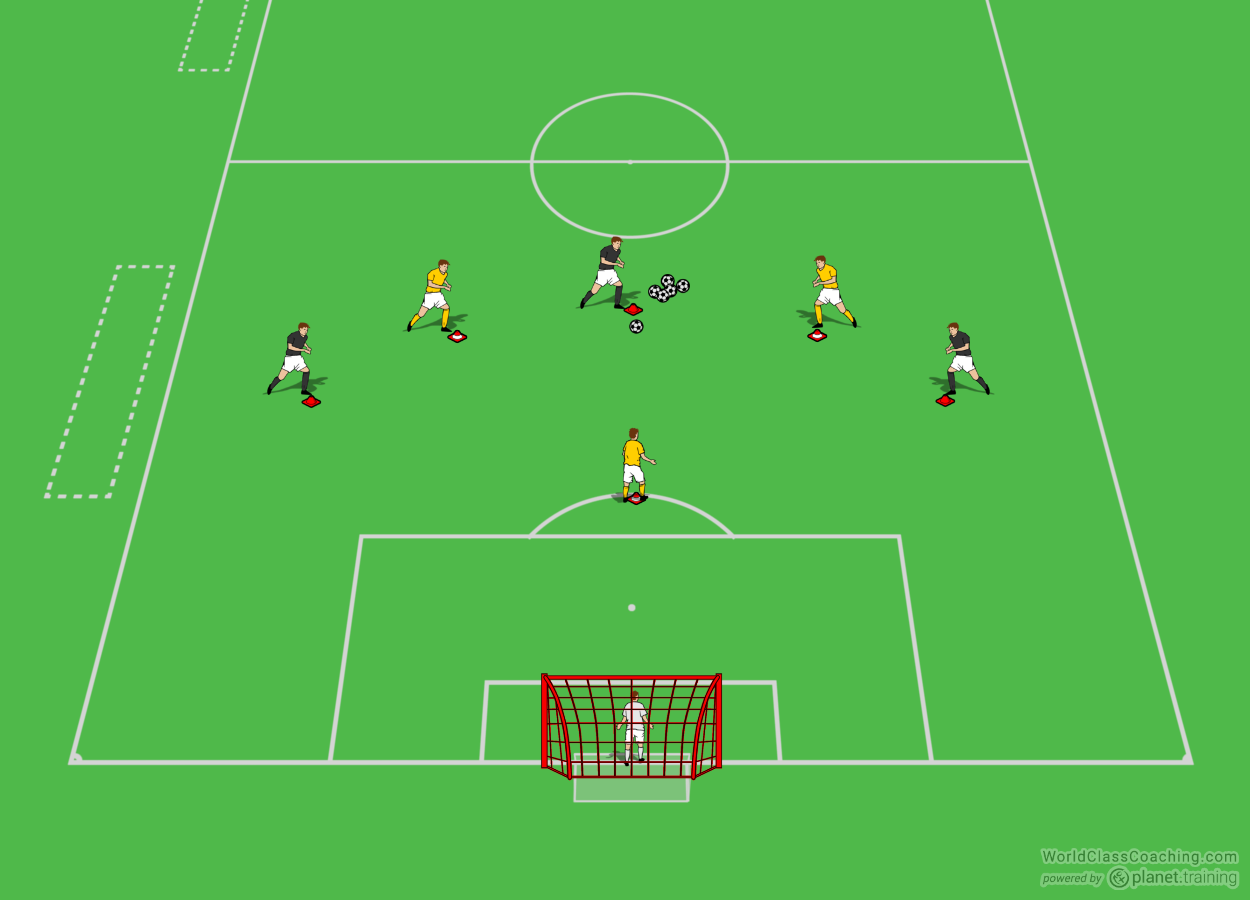
Execution
The central attacker starts each time and passes the ball to a wide player. The central defender moves to the side of the ball. But, unlike other defending sessions, does not sprint to pressure the ball. This would allow an easy pass across for other attackers to advance on goal too easily.
Remember the main objective of this central defender is to slow the attack down, not to win possession, so the other defenders have time to recover.
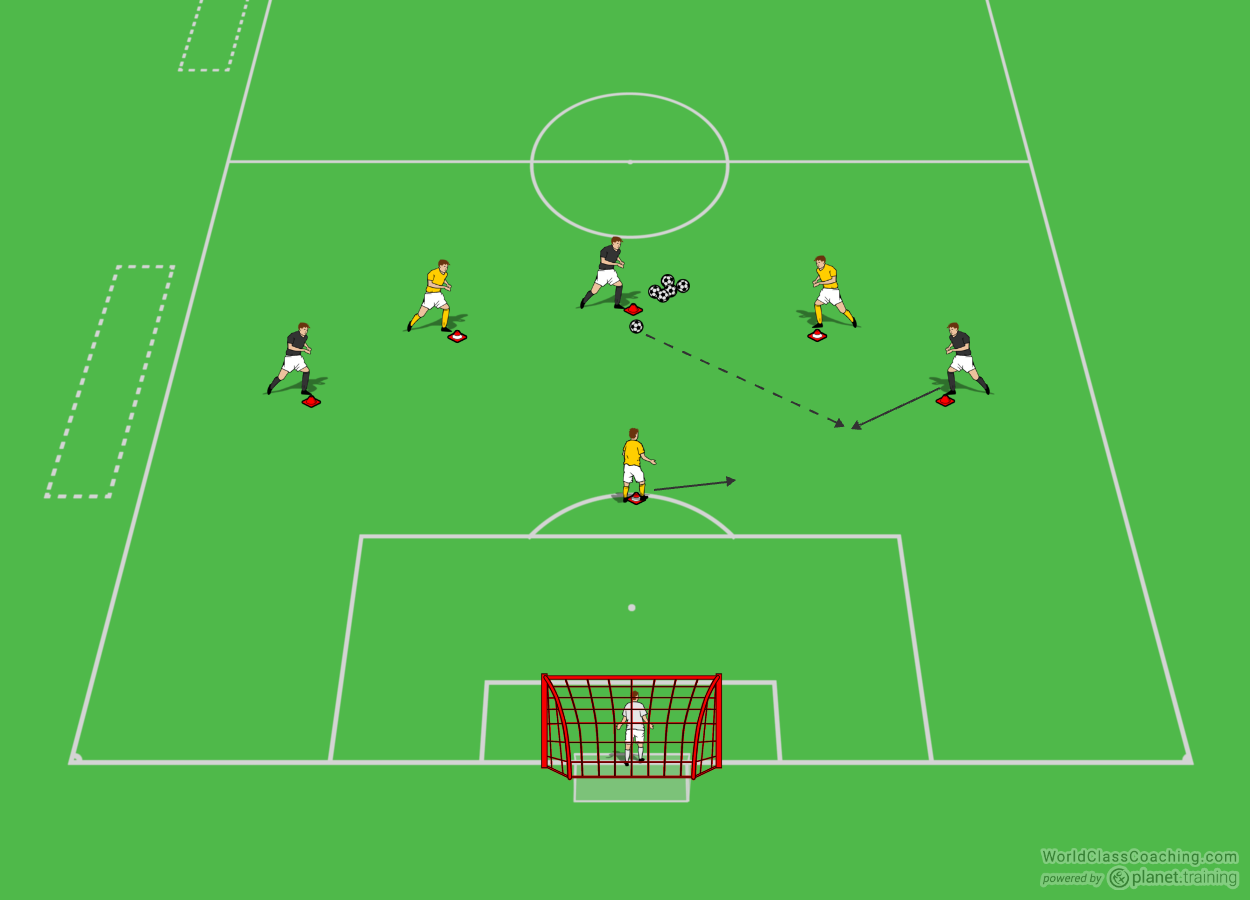
As soon as the central attacker passes the ball the 2 recovering defenders start their runs to get behind the ball to act as cover and balance. The central defender makes sure to slide across and allow the attacker with the ball to advance. At the same time going roughly half their speed backwards to allow the attacker the come on to them. Their position is such that they do not allow a clear run on goal but also delay/cut any pass to the opposite wide player off. Passes backwards are fine as this allows further time for the recovery defenders to get into position.
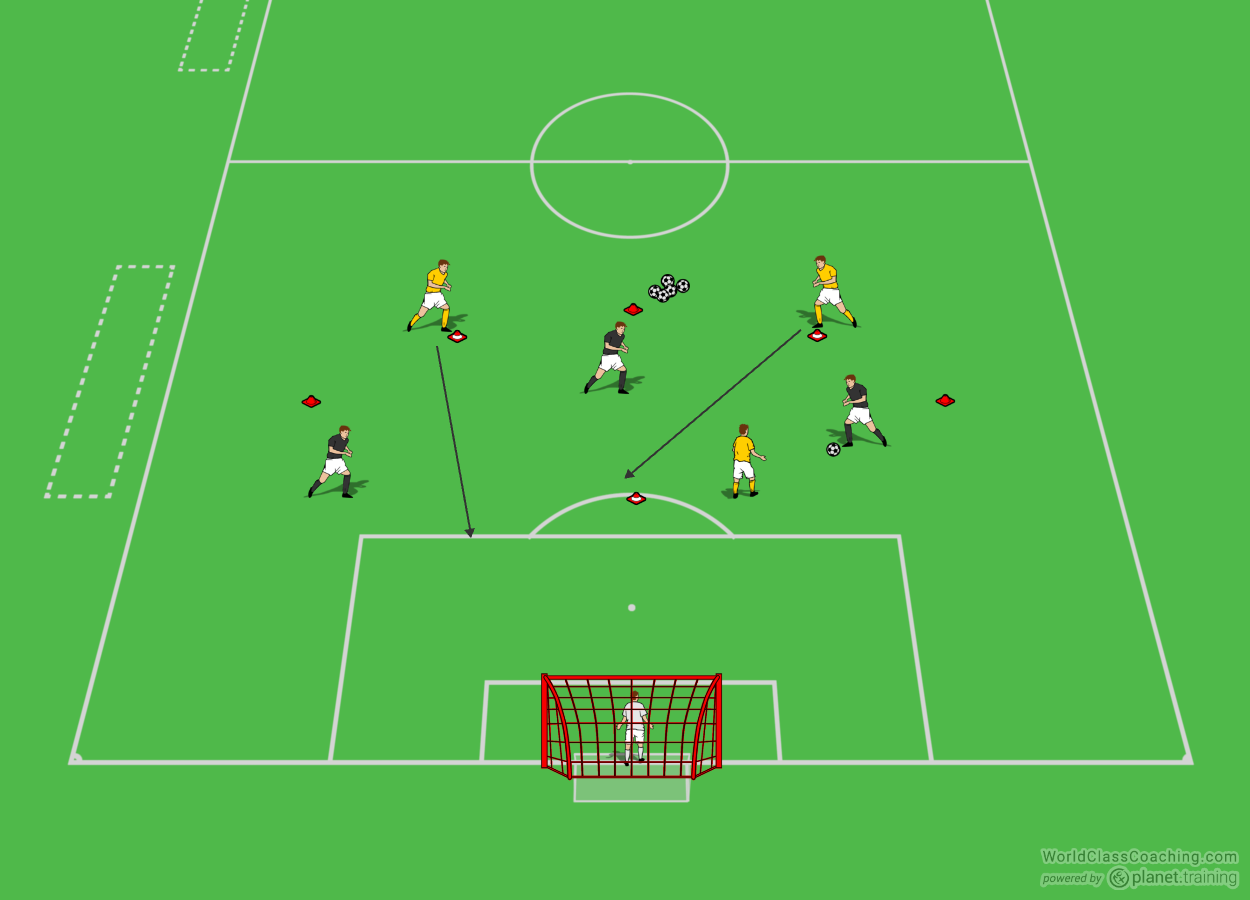
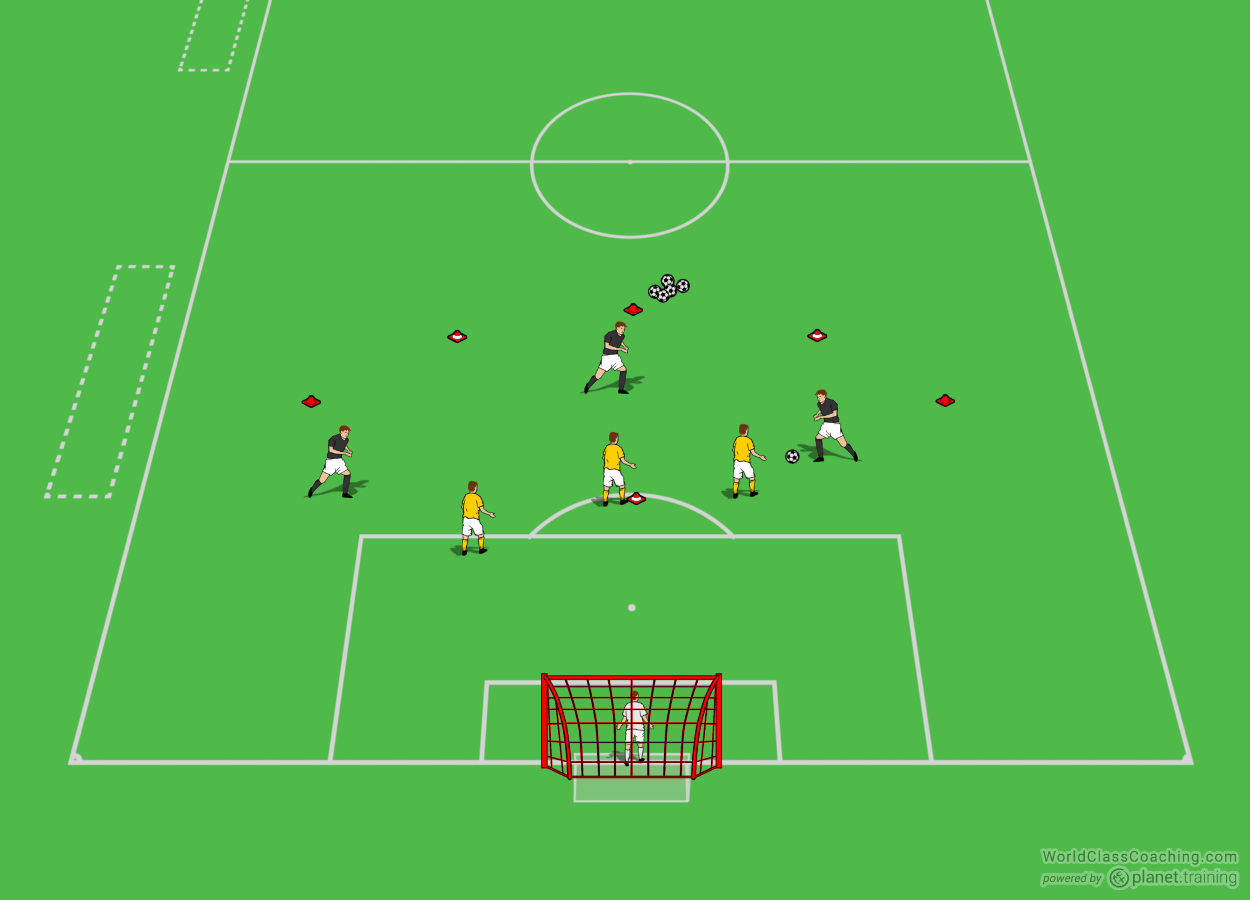
Explain to the 2 recovering defenders that they must sprint back into a position to support and slow down the attack. Once they are in position they can then aim to win possession. If they intercept a pass while recovering, then this is fine. Once the defenders win possession the play stops. If you have the players have another 2 recovery defenders ready to go as players will need time to rest after each repetition.
Next tell the central attacker to dribble the ball forward, straight at the central defender. Remember the central defender’s aim is to slow the attack down and should not go sprinting to the ball. When the ball is passed out wide, one of the recovering defenders gets close, on the inside, of the attacker and aims to force them out wide.
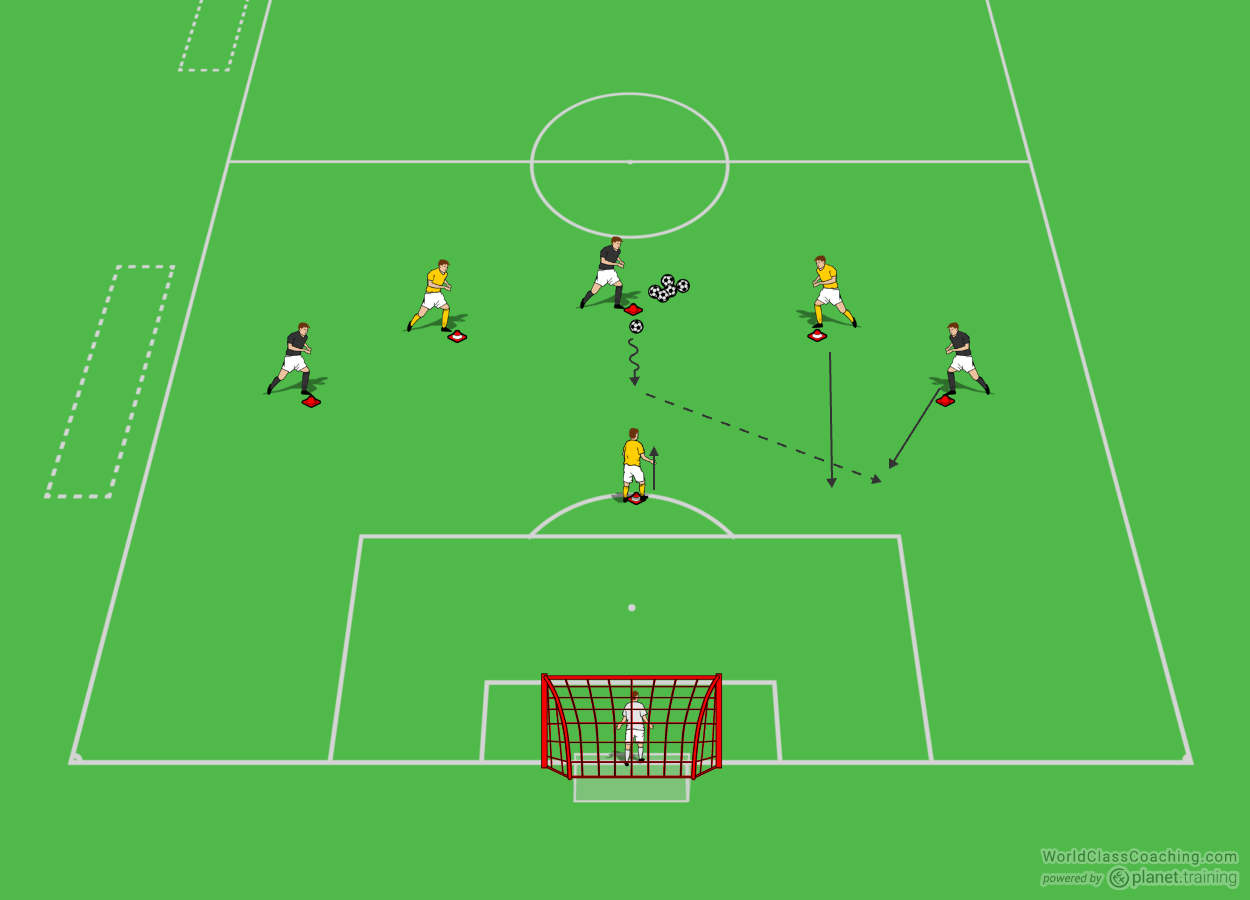
The central and opposite defender then become cover and balance respectively to support the recovering defender pressuring the ball.
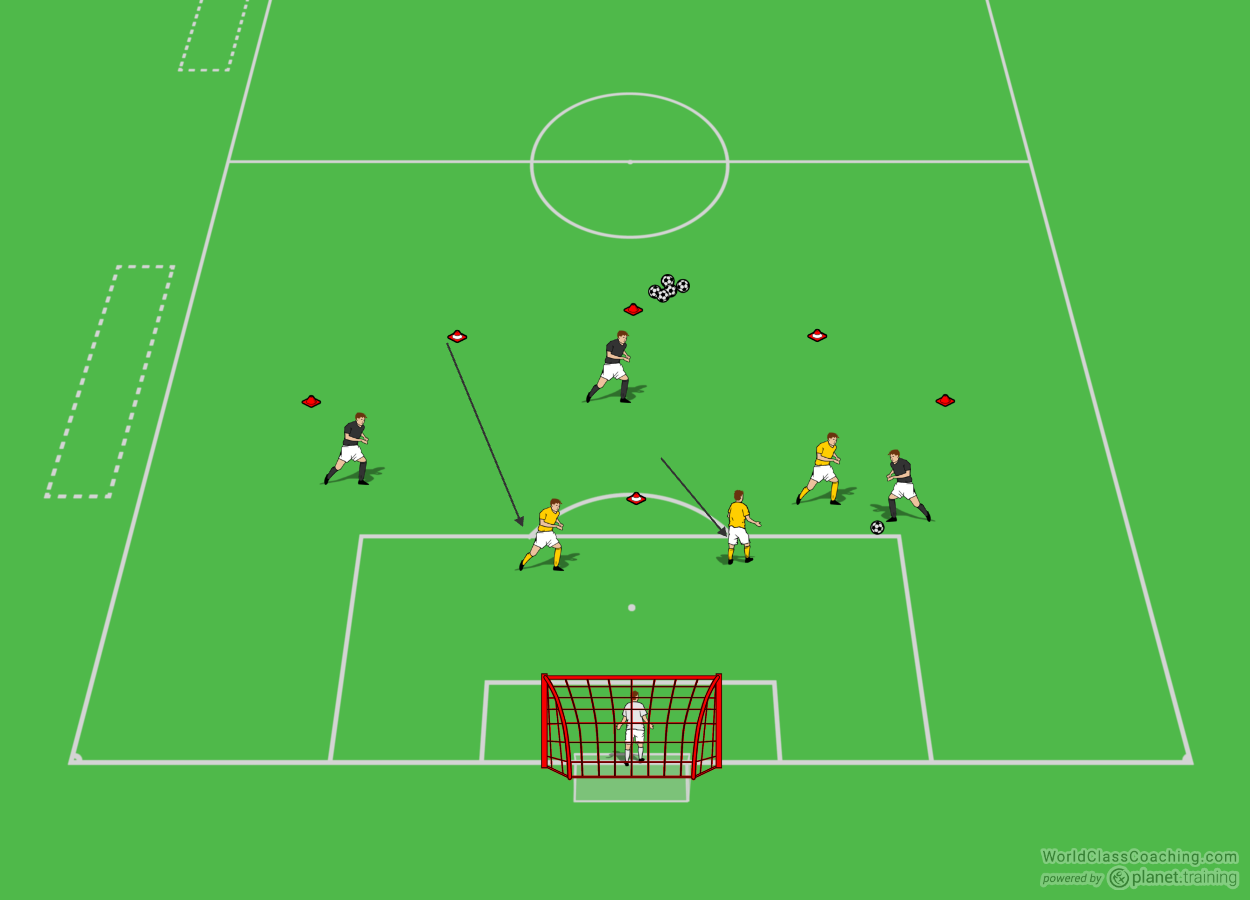
A GK is also used for game realism. The main objective for the initial defender is to slow the attack down by not committing themselves to get close to the attacker with the ball. If possible force the attacker away from goal while the recovering defenders get back into a position to help. Force the attackers into making either poor shot selections or into making predictable/slow decisions like passing backwards/sideways or slowing down.
Variations
- Have different starting positions for both defenders and attackers
- Have goals for the defenders to score in when they win possession back
- For really advanced players have less defenders than attackers (underloads)
By Sean Pearson. Sean is also the author Coaching Team Shape in the 3-3-1, Coaching Team Shape in the 4-2-3-1 and Coaching Team Shape in the 4-3-3


